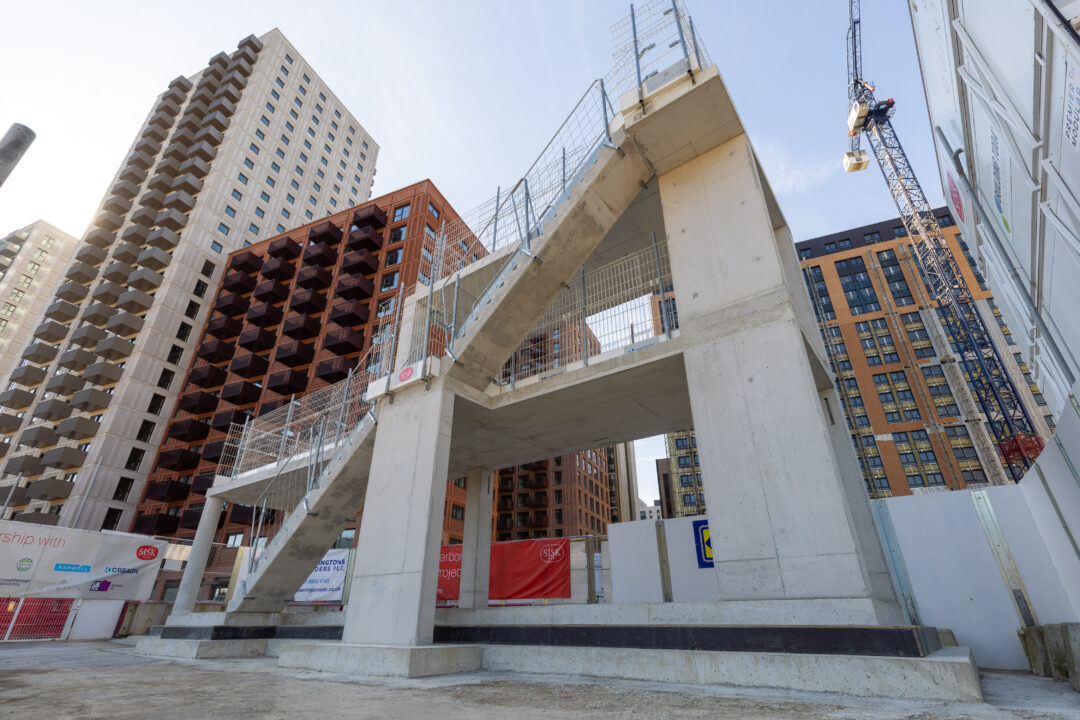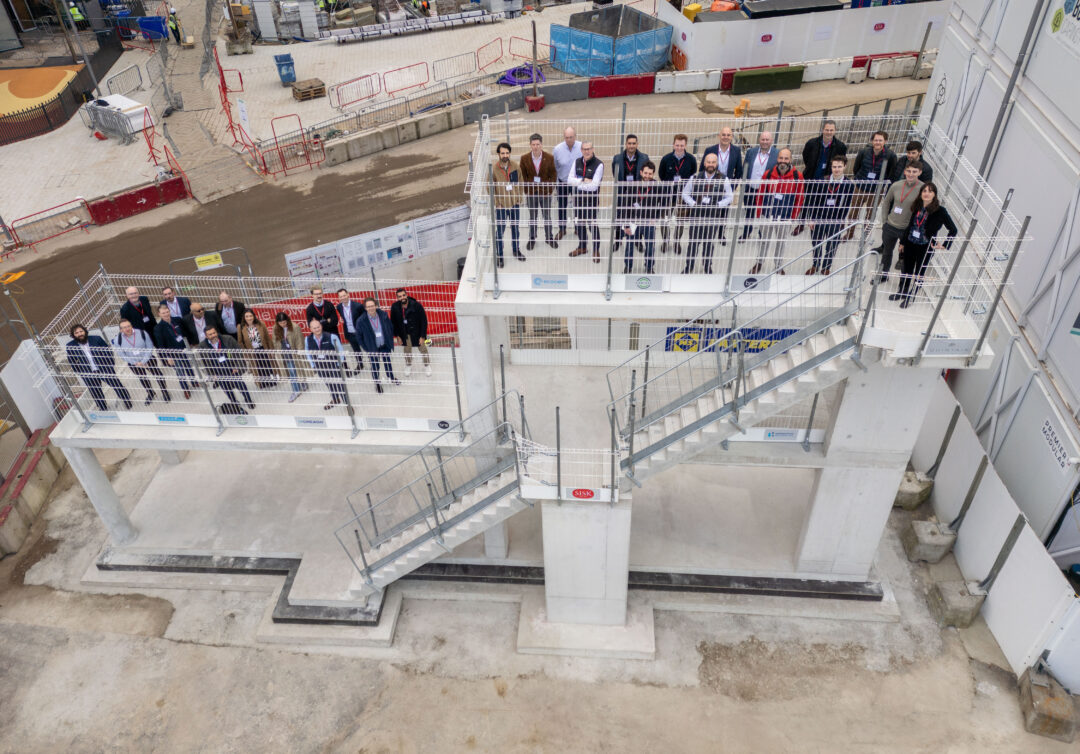Maria Estrada, project lead, Sisk was a recent panellist at FOOTPRINT+ in London. Maria gives her insights below about our Scalable Low Carbon Demonstrator Project and why the industry must continue to push boundaries and trial innovative technologies.
Last week I had the privilege of participating in a dynamic session at Footprint+, an event dedicated to driving a zero-carbon future. On the Materials Future stage, I showcased our Scalable Low Carbon Demonstrator Project, an industry-first initiative proving that low-carbon concrete isn’t just an ambitious concept. it’s a tangible reality.
Our industry needs more trials, data, and real-world testing to accelerate the adoption of low-carbon concrete and standardisation efforts. Our demonstrator project is the first of its kind, scaling up Ecocem ACT technology from a lab environment to full-scale live construction. Tested in accordance with BSI Flex 350 standards, this breakthrough approach has successfully cut embodied carbon emissions by 70%—a milestone in construction.

About the Scalable Low Carbon Demonstrator Project
The focus of this project was to advance Ecocem ACT, a revolutionary low-carbon concrete technology, from a pilot phase to real-world structural applications. For the first time, ACT was integrated into full-scale construction - a mock up structure designed by Ramboll - demonstrating its feasibility across various building methods.
By reducing clinker content by 80% and replacing it with 50% limestone and 30% GGBS, ACT technology has dramatically lowered the embodied carbon of concrete. This was tested in reinforced and post-tensioned slabs, columns, and precast elements, using ready mix and precast concrete applied within typical construction timelines. Industry partners Capital Concrete and Creagh Concrete played a pivotal role in scaling up the production of 60m³ of concrete, ensuring its viability across diverse applications.
Surface finishes, workability, and formwork performance were extensively assessed, alongside performance testing by Loughborough University and BRE, reinforcing compliance with BSI Flex 350 standards. The results speak for themselves—our project is driving forward the standardisation of low-carbon concrete, ensuring it can be adopted at scale.

Looking Ahead
The insights gained from Footprint+ panel session reaffirmed the urgency for industry-wide adoption of sustainable materials. By continuing to push boundaries, trial innovative technologies, and expand real-world testing, we can shape a built environment that prioritises sustainability and putting collaboration as a first step.
The future of materials is here, and our project is proving that low-carbon concrete is ready to lead the way. Our industry needs more trials, data, and real-world testing to accelerate the adoption of low-carbon concrete and standardisation efforts.
